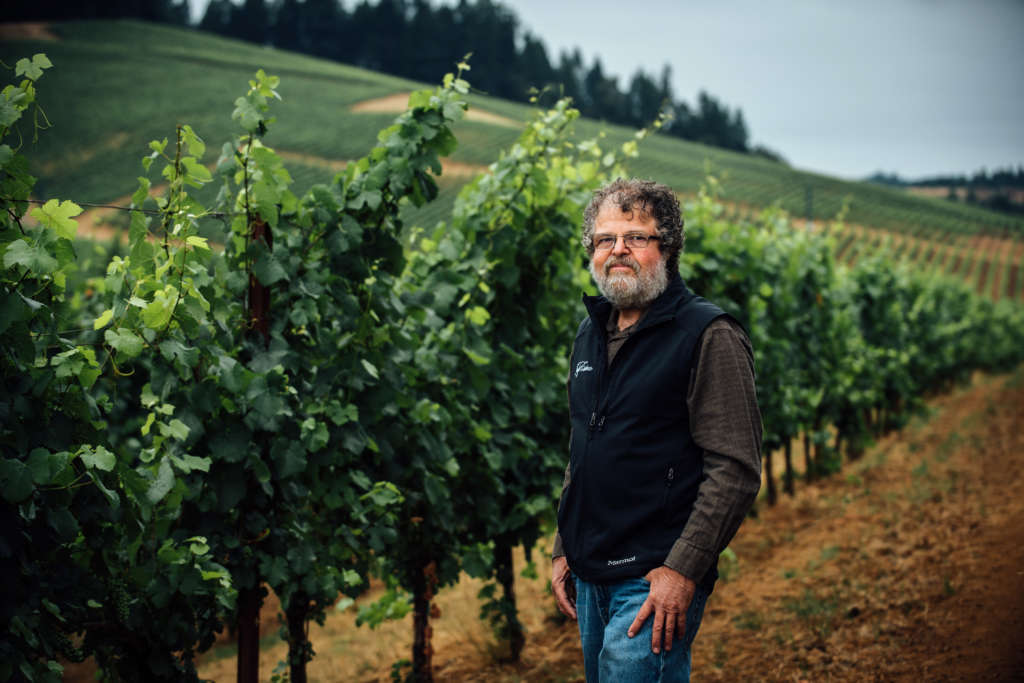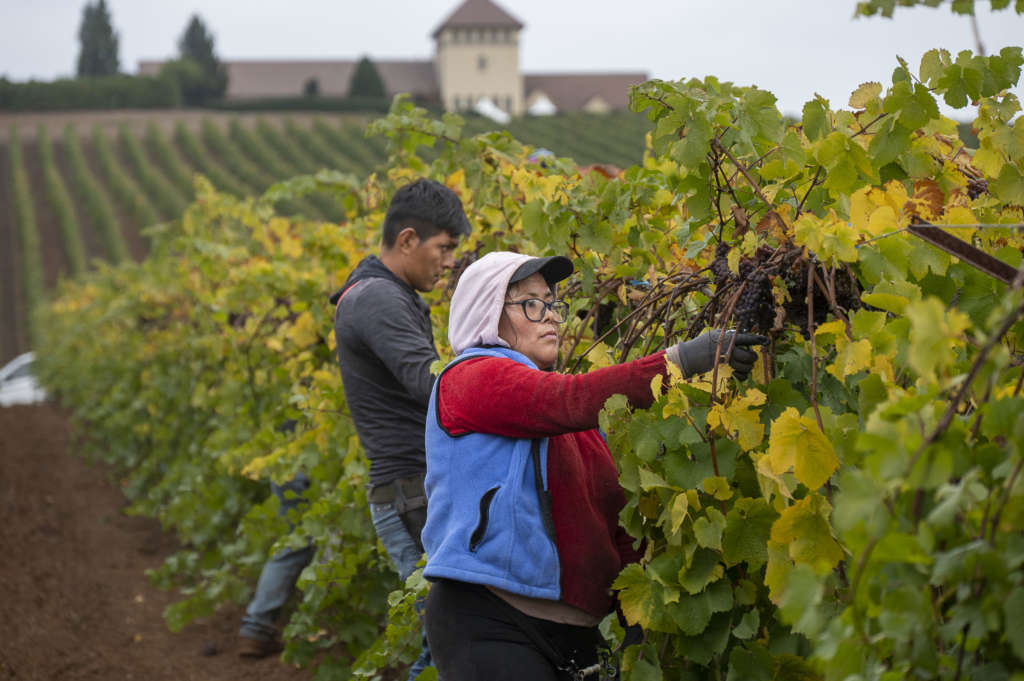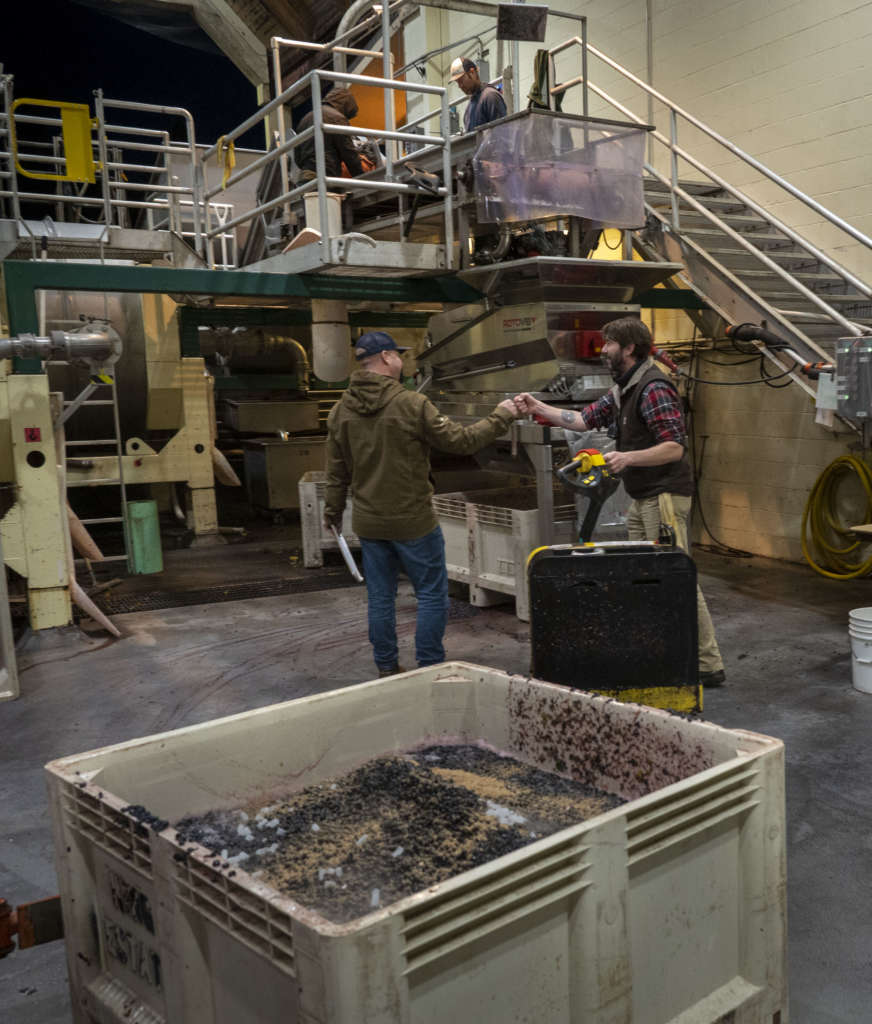King Estate Director of Viticulture Ray Nuclo offers his assessment of the 2022 harvest. Read on!
After a worrisome start, things broke our way to ultimately culminate in a very successful harvest. Specifically, these three factors came together, leading to our biggest harvest ever:
- Conditions during bloom were optimal, resulting in exceptional fruit set.
- Wet weather in June contributed to high soil moisture content which in turn helped produce larger than average clusters.
- Warm, dry weather during September and particularly October allowed the grapes to achieve ideal ripeness levels.

Frost scare
The year got off to a rough start in western Oregon with a hard frost on the morning of April 15 causing substantial damage to the primary buds in many vineyards throughout the southern Willamette Valley. Vines were just coming out of dormancy with most vineyards not yet at budbreak but with swollen buds that were susceptible to the kind of temperatures experienced that morning. The frost event was followed by cool wet weather that predominated the overall weather patterns throughout the next couple of months. As a result, the vines were slow to recover and bloom was delayed by two to three weeks, occurring toward the end of June.
Weather improved during this period and, while there were fewer flowers than average due to the frost, fruit set was exceptional. July and August were quite warm and dry, resulting in ideal growing conditions. June’s cool, wet weather meant soil moisture was much higher than normal going into this period, resulting in larger than average clusters. It did, however, create challenges due to the large amount of canopy growth. Powdery mildew pressure was very high due to the larger canopy size. Growers had to be diligent with their canopy management and integrated disease control practices.
Cautiously optimistic
Crop estimates in August gave the first indication of the rebound from the frost that vineyards had experienced. Yields at affected vineyards were estimated to be better than expected. Véraison, or color change, began in mid- to late August, continuing the pattern of later-than-average development and portending a late harvest. To pull off a successful harvest in the Willamette Valley, October was going to have to be cooperative.
September started off warmer than normal. Ripening proceeded at a good rate and King Estate began receiving fruit from the Willamette Valley on Sept. 30. Initial indications were that fruit was going to be on the lower side of the ripeness scale but that yields were going to be higher than estimated. This changed dramatically when we experienced the warmest October on record. Ripening accelerated quickly and the new challenge was trying to bring in all that ripe fruit in a compressed window.

Because of the hard frost, many wineries, including King Estate, had anticipated lower yields and therefore had sourced additional fruit. With the higher-than-estimated yields, the new challenge was finding space for all the grapes. Cooler fall-like conditions arrived in the last week of October. While the bulk of the harvest was in, the last remaining blocks and vineyards were harvested during breaks in weather over the course of the last days of October.

Record volumes at King Estate
By the time harvest concluded on Nov. 6 with the arrival of some Cabernet Sauvignon from Washington state, King Estate posted a record-setting 4,761 tons of fruit. Now the work of tasting, testing, blending, bottling and enjoying (OK, that’s not work) begins.
